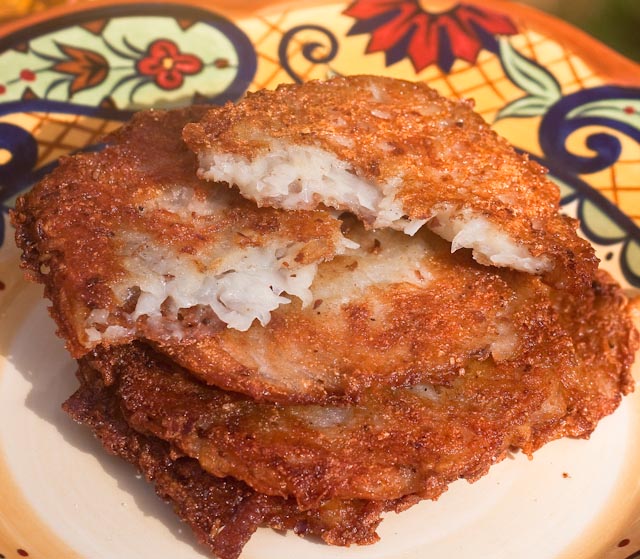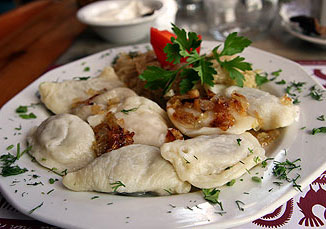Pureed Food Recipes Biography
Source(google.com.pk)
The easiest way to make your own purees is to wash, peel, chop and then steam whichever fruit or vegetable you’re using until it’s soft. Be careful not to overcook as the food will lose its taste and texture.
Then blend it in a liquidiser or mouli. You can control the texture by adding a bit of the reserved cooking water or breastmilk / formula milk.
Always allow the food to cool and then test it yourself to make sure it's the right temperature before giving it to your baby.
Freezing purees
Homemade purees can be made in batches and then frozen.
Once you've made the puree allow it to cool before freezing. You can use ice cube trays (just make sure you cover them so they don't get contaminated from other food in the fridge) or individual ice cubes with lids.
If using ice cube trays, once frozen you can pop the cubes into labelled freezer bags. This way you have a ready supply of different frozen purees that you can mix and match once your baby is happy with single-ingredient purees.
When re-heating, you must make sure the food is piping hot, then allow to cool before giving to your baby.
Do not reheat foods more than once and never refreeze uneaten food.
Use big rubber ice cube trays - They are brilliant - so easy to push the food out - and get one with larger squares for when your baby's appetite gets bigger. (Karen)
I started whizzing it all in a food processor to a smooth consistency (using the veg juices form the bottom of the steamer) as they progressed I used less juice so the consistently was thicker. Then we progressed to half in the processor totally smooth and half I mashed with a fork so we have a rougher consistency and then I gradually whizzed up less and less until I was mashing it all, then leaving a bit more lumps until we were on all just chopped very small. (Sophie)
Carrots may be introduced between 6 and 8 months of age. As always, I recommend that you thoroughly discuss any feeding issues with your pediatrician as generalities may not apply to your child.
Goodness of Carrots
Carrots are very high in beta carotene. Beta carotene is a Carotenoid. Carotenoid are a set of darkly colored pigments called pro vitamin A carotenoids that can be converted to Vitamin A. Vitamin A is very important in a developing infant's diet.
Carrots are often one of baby's first food. They are easy to digest and are packed full of nutrients such as Vitamin A, Vitamin C and Calcium.
Due to the issue of Nitrates, recommendations for the introduction of carrots varies. I have found that more often than not, the recommendation for introducing carrots is between 7 and 8 months old. Again, please see the Nitrates article for more in-depth information.
When purchasing carrots, look for those with minimal sprouting at the top. In other words, if the carrot has started to grow, it has been sitting around for quite some time. Also look for little "hairs" growing along the carrot. This also indicates the carrot is growing and has probably been sitting around for awhile.
The best way to preserve the flavor, crispness, and beta-carotene content in carrots is to refrigerate them.
Is it a good idea to use "baby carrots"?
“Baby” carrots are the product of modern technology and are specially formed by a machine that cuts them out from full sized older carrots. Some “growers” add green food coloring at the “stem” for further effect. One way to tell if a baby carrot is truly a baby carrot is to read its packaging. The common “baby carrots” sold in the grocery store will actually say “baby cut” carrots.
Baby cut carrots are cleansed in a solution that often contains chlorine so that they will not turn white while in the package. Skip these carrots and opt to peel and cut your own, especially if you will be making carrot baby food!
Visit this link at USA Today to read all about the inventor of the “baby carrot”.
How prepare carrots
When purchasing carrots, look for those with minimal sprouting at the top. In other words, if the carrot has started to grow, it has been sitting around for quite some time. Also look for little "hairs" growing along the carrot. This also indicates the carrot is growing and has probably been sitting around for awhile.
The best way to preserve the flavor, crispness, and beta-carotene content in carrots is to refrigerate them.
When preparing Carrots, steaming is the very best method for cooking and preparing them. Steaming Carrots allows the beta carotene to be more bio-available and readily used by the body. Add a wee bit of butter to help better absorb the vitamin A.
Carrots should be peeled when making baby food purées as many infants will not be able to digest the skins. Unless you are purchasing Organic carrots, you should always peel carrots as chemicals do concentrate in the skin of the carrot. If you do not buy Organic carrots, please cleanse the carrots by using a vegetable brush and lightly scrubbing the carrots under cool running water.
To begin peel skin off of the turnip then cut turnip into pieces... size doesn't matter, but the smaller you cut them the faster they will boil. After cutting the turnip place in a saucepan with water and boil till done. (when you can stick a fork through piece, it's done.) Cut up carrots and steam until tender - or steam turnips and carrots together.
When turnip & carrot are ready, put both in one bowl or saucepan and mash them together. Or you can mash them separately (food processor can also be used) and then mix them together. Add spices as desired.
Pureed Food Recipes Food Recipes for Dinner For Kds with Pictures In Urdu Desserts Pinoy In Hindi in Sinhala Language for Kids to Make in Sri Lanka

Pureed Food Recipes Food Recipes for Dinner For Kds with Pictures In Urdu Desserts Pinoy In Hindi in Sinhala Language for Kids to Make in Sri Lanka

Pureed Food Recipes Food Recipes for Dinner For Kds with Pictures In Urdu Desserts Pinoy In Hindi in Sinhala Language for Kids to Make in Sri Lanka

Pureed Food Recipes Food Recipes for Dinner For Kds with Pictures In Urdu Desserts Pinoy In Hindi in Sinhala Language for Kids to Make in Sri Lanka

Pureed Food Recipes Food Recipes for Dinner For Kds with Pictures In Urdu Desserts Pinoy In Hindi in Sinhala Language for Kids to Make in Sri Lanka

Pureed Food Recipes Food Recipes for Dinner For Kds with Pictures In Urdu Desserts Pinoy In Hindi in Sinhala Language for Kids to Make in Sri Lanka

Pureed Food Recipes Food Recipes for Dinner For Kds with Pictures In Urdu Desserts Pinoy In Hindi in Sinhala Language for Kids to Make in Sri Lanka

Pureed Food Recipes Food Recipes for Dinner For Kds with Pictures In Urdu Desserts Pinoy In Hindi in Sinhala Language for Kids to Make in Sri Lanka
.jpg)
Pureed Food Recipes Food Recipes for Dinner For Kds with Pictures In Urdu Desserts Pinoy In Hindi in Sinhala Language for Kids to Make in Sri Lanka

Pureed Food Recipes Food Recipes for Dinner For Kds with Pictures In Urdu Desserts Pinoy In Hindi in Sinhala Language for Kids to Make in Sri Lanka

No comments:
Post a Comment